365 urban species. #267: Domestic Apple
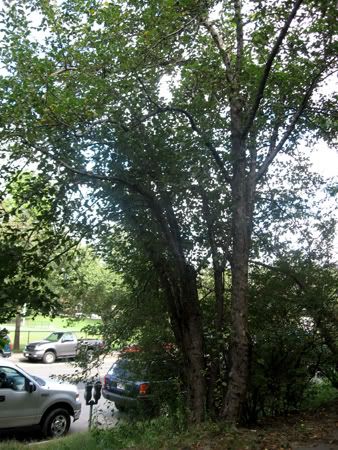
Photos by urbpan. Location Brookline Ave, Brookline.
Urban species #267: Domestic apple Malus x domestica
The ancestor of the domestic apple is a tree called Malus sieversii that grew wild in Kazakhstan, along the Silk Road. The fruit of the tree spread along trade routes until its origin was forgotten. It's genes mixed with other Malus species, such as M. sylvestris and M.orientalis, and the resulting hybrid M. domestica, was cultivated and distributed by the Romans. In recent years the ancestral home of the apple was rediscovered, to the delight of those researchers who hope to increase the biodiversity of the apple gene. Because so few varieties of apples are commercially grown, they are vulnerable to the kind of catastrophe that caused the Irish potato famine (a disaster that finally turned around when genes from the ancestral potatoes--from Peru--were introduced into the pool). In the United States, there are only about a half dozen varieties of apple available in most places, and each is genetically identical. Every red delicious apple came from a clone of a single parent tree, every Macintosh apple--and so on. The genetics of apples are such that, if a red delicious apple core is tossed out, it will not (probably) result in a tree that produces red delicious apples. The seeds are genetically unique and distinct from one another, and each one has the potential to grow into a tree that produces a wholly new and novel type of apple. Occasionally a person may encounter a wild domestic apple tree, growing where a core was discarded, but these are hard to distinguish from native crabapples and crabapple hybrids.
City planners, landscapers, and parks departments sometimes choose domestic apples in some of their planting. The reasons for this choice are mysterious to me, but the results cheer me. Discovering a tree in a city park with edible fruit is an unexpected joy. It's an artificial recreation of the experience our earliest primate ancestors must have enjoyed. Large, sweet, and edible fruit, there for the taking! There are many insects and fungi that also enjoy apples--usually a "wild" apple only affords a few bites that aren't scarred with black spots and maggot burrows.
This entry is heavily influenced by the writings of science journalist Michael Pollan, especially his great book The Botany of Desire.
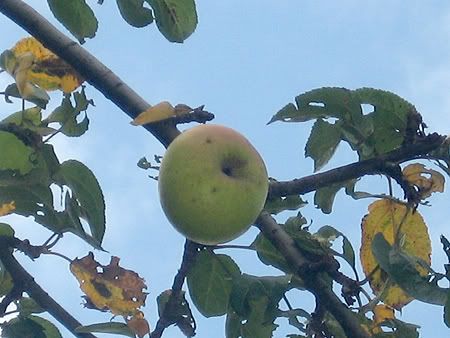
That one looks tasty!
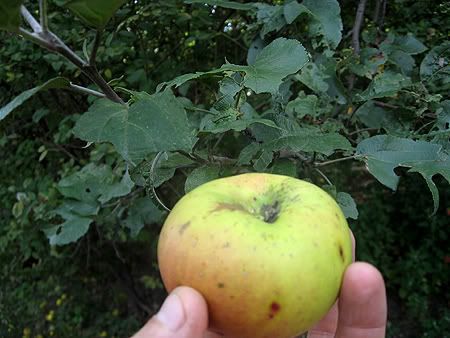
I used a long stick to knock it down--I caught it!
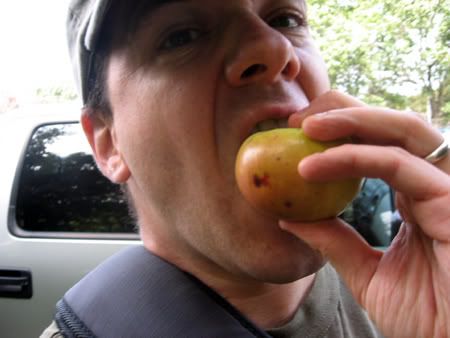
Sweet accomplishment!
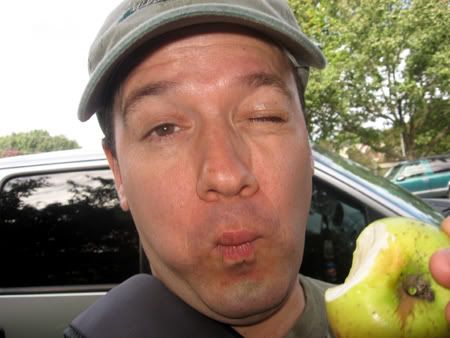
Not-so-sweet apple.